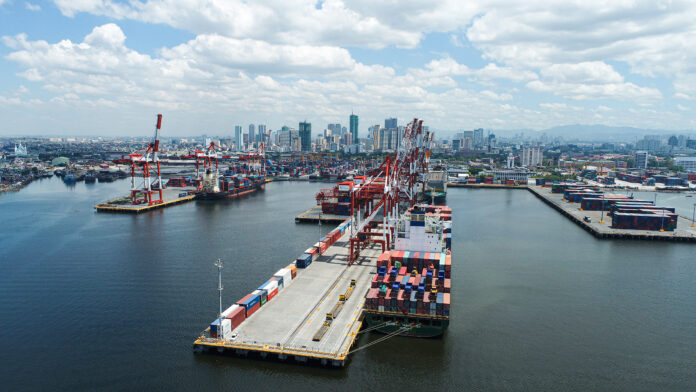-
Port operator Asian Terminals Inc. (ATI) is investing an estimated P6.9 billion this year in step with its growth strategy and investment commitments to the government
-
The investment will be used to acquire more modern cargo-handling equipment and develop logistics infrastructure projects at its terminals and facilities in Manila, Batangas, Laguna, and Cavite
-
For this year, ATI expects volumes to be better than last year’s but does not see a return to pre-pandemic levels until 2022 or 2023
Port operator Asian Terminals Inc. (ATI) is investing an estimated P6.9 billion this year to acquire more modern cargo-handling equipment and develop related logistics infrastructure projects at its terminals and facilities in Manila, Batangas, Laguna and Cavite.
ATI in its 2020 annual report said the investment is in step with its growth strategy and its investment commitment with the Philippine Ports Authority.
This year’s budget is much higher than last year’s P2 billion investment, which is lower than annual capital expenditures in the previous years. The decline was “a result of delays in ongoing investments and construction due to COVID-19 quarantine limitations and also deferment of some investments due to lower volumes in 2020,” ATI executive vice president William Khoury explained during the company’s recent virtual annual stockholders’ meeting.
ATI closed 2020 with nearly 1.3 million twenty-foot equivalent units (TEU) handled, 19% lower than the record volume of 1.61 million TEUs it handled in 2019.
The company posted a 20.4% decline in net income last year to P2.96 billion from P3.71 billion in 2019.
The port operator noted, however, that total cargo volume handled in the second half of 2020 grew compared to the first half of the year, cushioning the negative impact of COVID-19 on its bottom line.
For this year, Khoury said they expect volumes to be better than last year’s but “the company does not expect volumes to return to pre-pandemic levels until 2022 or 2023.”
Last year, additional container yards were developed in the Manila South Harbor expanded port zone. This included converting old warehouses into added backup space. Two container blocks adjacent to the main yard came on stream last year, adding over 2,000 TEUs in static container capacity.
Other major port infrastructure undertakings also made headway last year, including the Pier 3 berth extension which will pave the way for the deployment of two ship-to-shore cranes and new rubber-tired gantry cranes in the terminal. Upon project completion, this will bring Manila South Harbor’s annual capacity to 1.9 million TEUs from the current 1.5 million TEUs, in time for the expected market resurgence post-pandemic.
In Batangas, civil works for the new passenger terminal started last year. Once completed, the new PTB will be able to accommodate 4,000 passengers at any given time, double its current daily capacity.
The Philippine Ports Authority general manager Jay Daniel Santiago earlier forecast that cargo volumes in the country would grow by 7% and container traffic by 6% to 8% this year.





